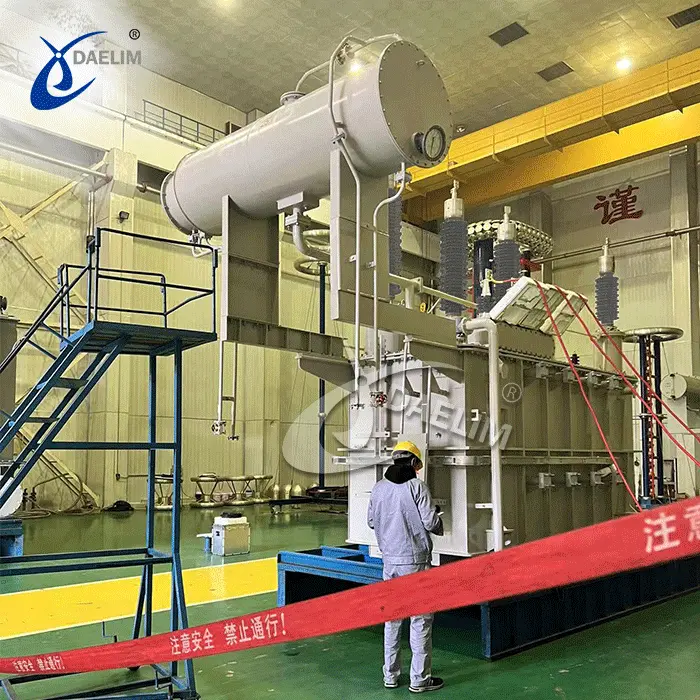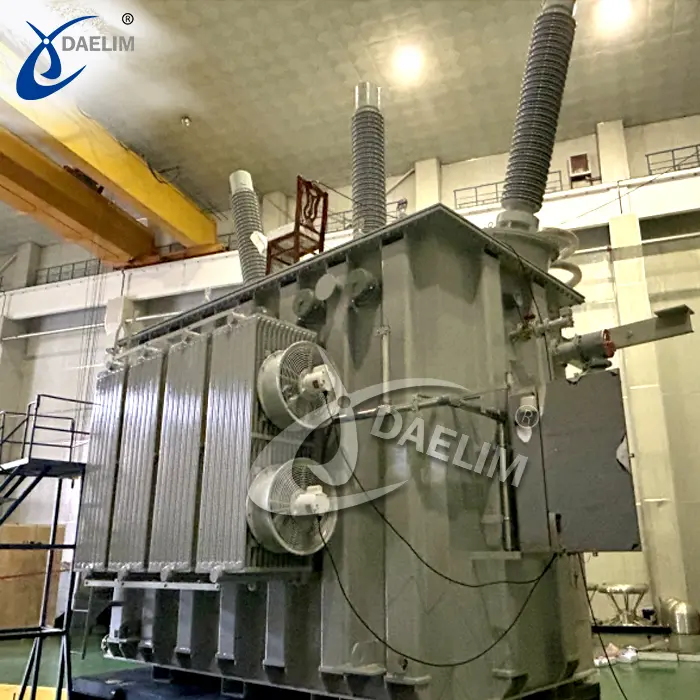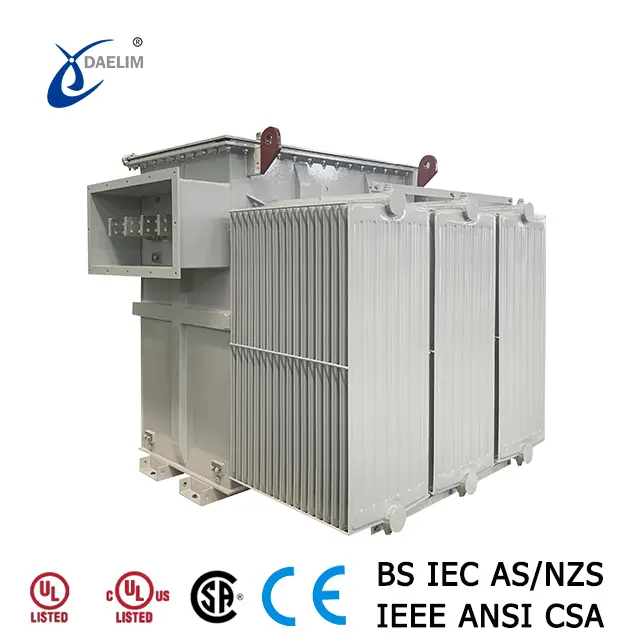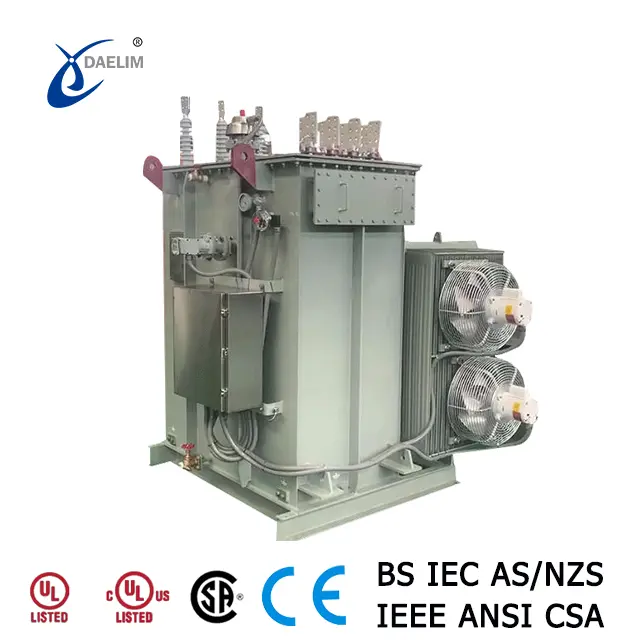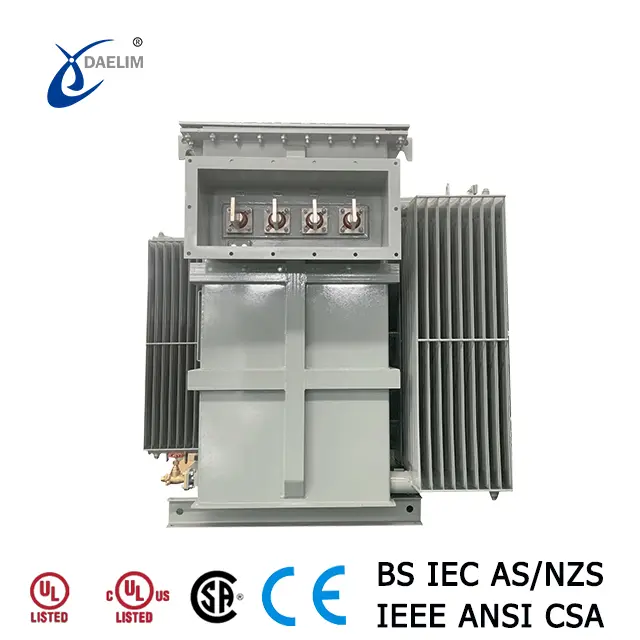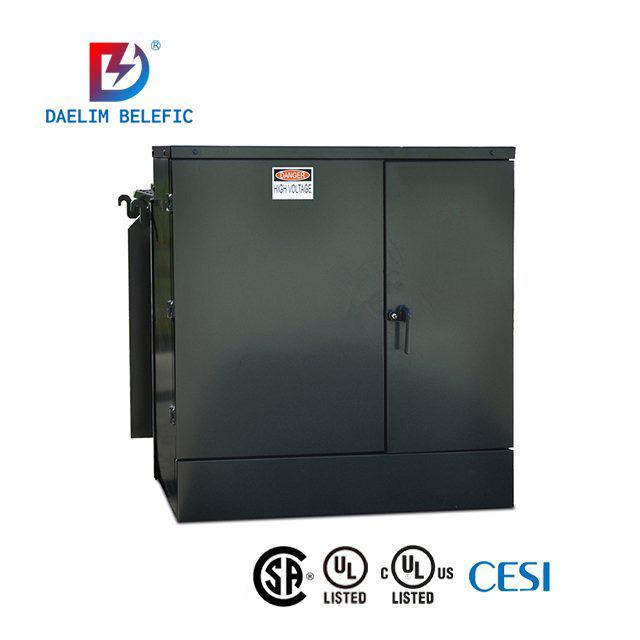What inspections are required before the transformer is put into operation?
Before commissioning a transformer, thorough inspection and testing are crucial to ensure its reliability and safety during operation. The following steps and considerations are essential:
1. Inspection
During inspection, the following steps should be carried out:
-
Oil Sampling and Chromatographic Analysis: Obtain oil samples for chromatographic analysis to assess oil condition.
-
Valve Status Check: Verify that gate and butterfly valves are open and correctly positioned. Ensure oil levels in storage cabinets and bushings meet specified levels.
-
Current Transformer Wiring Check: Verify correct wiring of current transformers, ensuring no secondary coil is grounded or left open-circuited.
-
Oil Flow Relay Operation Check: Confirm reliable operation of the oil flow relay.
-
Air Insulation Distance Check: Ensure air insulation distances between bushings and ground, and between bushings of different voltage levels, comply with relevant standards.
-
Grounding System Check: Ensure proper grounding, including grounding of the oil tank and any grounding bushing leads on the iron core (clamp).
-
Protection Device and Control Circuit Check: Verify correct wiring of gas relays, pressure relief valves, oil level gauges, thermometers, and current transformers. Ensure proper operation and reliability of protection devices and circuit breakers.
-
Desiccant and Breather Check: Inspect desiccant silica gel condition, oil level, and breather functionality.
-
Cooling System and Control Box Operation Check: Verify correct and reliable operation of the cooler and control box systems.
-
Oil Circulation Direction Check: Confirm correct oil circulation direction based on the submersible oil pump's orientation.
2. Transformer Pre-Installation Testing
Before installation, perform the following tests:
-
Bushing Current Transformer Test: Measure insulation resistance of the secondary winding to ground, DC resistance of the secondary winding, conduct excitation characteristics test, and check transformer ratio and polarity.
-
Bushing Test: Measure insulation resistance of the bushing main insulation and end screen to ground. Measure dielectric loss tangent (tgδ) and capacitance value of non-porous porcelain bushings.
3. Electrical Testing After Transformer Oil Filling
After oil filling, conduct comprehensive electrical tests:
-
Measure DC resistance of winding and bushing at all tap positions.
-
Measure voltage ratio of all taps.
-
Verify transformer connection group.
-
Measure insulation resistance and absorption ratio (polarization index) of winding and bushing.
-
Measure dielectric loss tangent (tgδ) of winding and bushing.
-
Measure DC leakage current of winding and bushing.
-
Perform AC withstand voltage test of low-voltage side winding and neutral point winding on the high-voltage side.
-
Conduct partial discharge and winding deformation tests on windings and bushings.
4. Grounding Check
Ensure reliable grounding of the transformer's supply-side neutral point, especially during impact testing.
5. Protection Device Settings
Verify correct settings and synchronization sensitivity of all protection devices and circuit breakers.
6. Gas Relay
During no-load impact testing, connect the gas relay signal contact to the heavy gas action contact for the power trip circuit.
7. On-Site Storage of Transformers
Upon arrival, adhere to the following storage guidelines:
-
Check for dampness. Ensure nitrogen pressure is between 0.01-0.03 MPa and oil meets electrical strength, micro water, and tgδ requirements before injecting.
-
Store for no more than 6 months under dry air. Conduct twice-daily inspections of box pressure. Promptly address significant leaks to maintain pressure requirements.
-
Store disassembled parts (e.g., oil storage cabinets, coolers) with protection against rain, dust, dirt, and rust.
-
Store accessories (e.g., measuring instruments, displays, junction boxes) in dry, ventilated rooms post-unpacking.
By meticulously conducting these inspections and tests, the safety, reliability, and long-term performance of the transformer can be ensured before it is put into operation.
Related Products
Related Article
Effects of Core Rusting on Transformers
Rust on a transformer's silicon steel sheets increases core loss and reduces efficiency. It causes overheating, degrading insulation and shortening lifespan. Rust also lowers magnetic conductivity, raises iron loss, and escalates hysteresis and eddy current losses, leading to higher induced currents, increased heat, and capacity loss.
Transformer Oil Uses and Requirements
Transformer oil is essential for insulation, heat dissipation, arc extinguishing, and the protection of core and coil components.
Differential Protection of UHV Transformer
Differential protection is the primary protection mechanism for transformers. By analyzing the arrangement of current transformers (CTs), the function and protection range of each differential protection in UHV transformers can be determined.
Unbalanced Current in the Differential Protection Circuit of UHV Transformers
Unbalanced current in UHV transformers' differential protection circuits can arise from inconsistencies in CT ratios, CT transmission errors, excitation surge currents, and transformer voltage regulation. These issues can affect the reliability of differential protection systems. Measures to mitigate unbalanced currents include using balancing coils and software adjustments, electronic and photoelectric transformers, methods to suppress and identify excitation surge currents, and compensating for voltage regulation effects. Implementing these strategies enhances the reliability and stability of UHV transformer protection systems.
How to Purify Transformer Oil ?
Oil purification is essential to ensure the quality of both new and in-service oil. It removes water, enhancing the insulation strength of insulating oil and the anti-emulsification properties of turbine oil, thereby reducing the deterioration rate of oil quality. Additionally, oil purification eliminates mechanical impurities and sludge sediments formed after oil deterioration. This helps avoid potential heat dissipation issues caused by oil system blockages and prevents mechanical impurities from damaging the equipment.
How to measure the load loss and short-circuit impedance of a transformer?
To measure transformer load loss and short-circuit impedance, apply a rated frequency sinusoidal voltage to one winding, short-circuit the others, and correct load loss to 75°C. Use voltmeters, ammeters, and power analyzers, and calculate impedance using specific formulas. Ensure accuracy by considering instrument placement and correcting measurements as needed.


